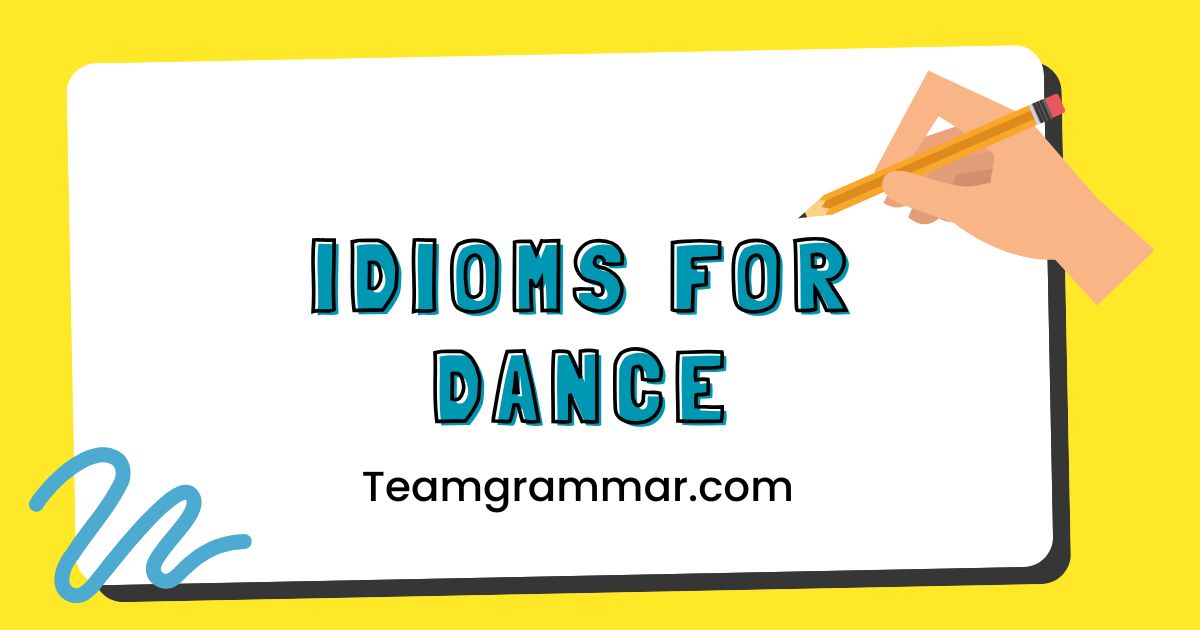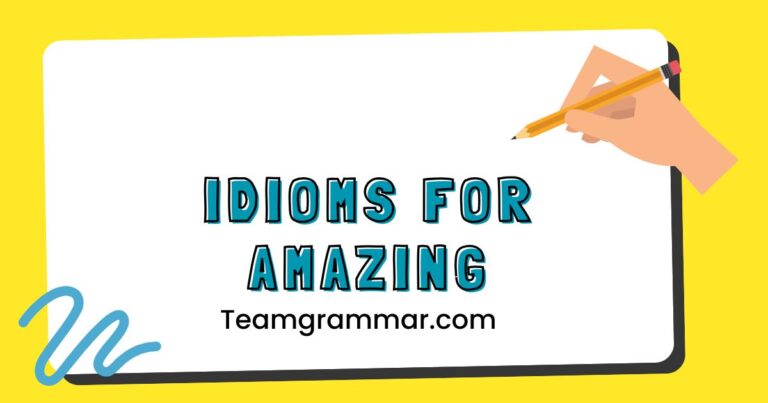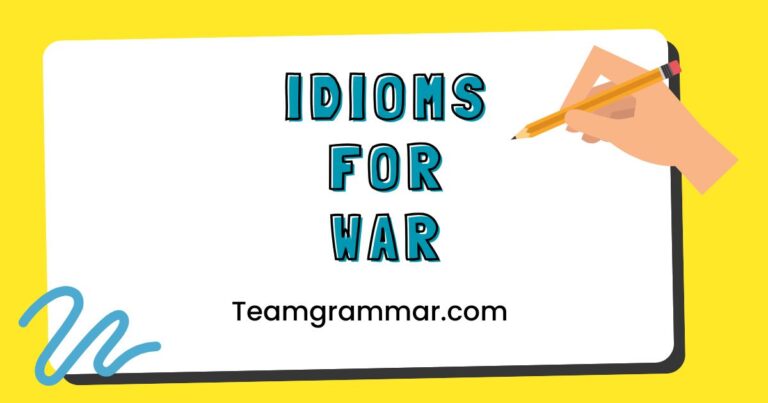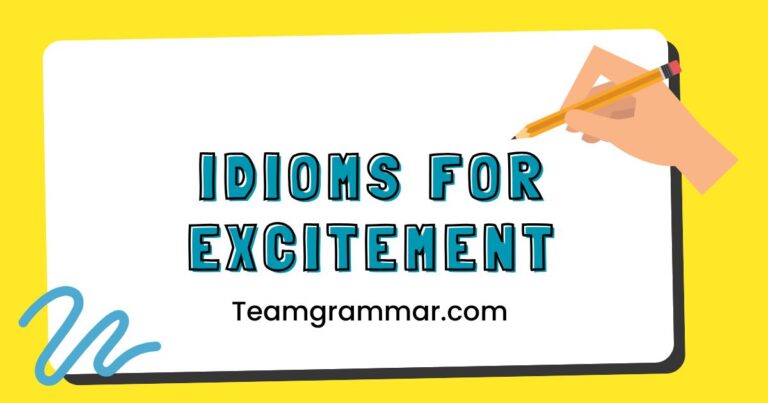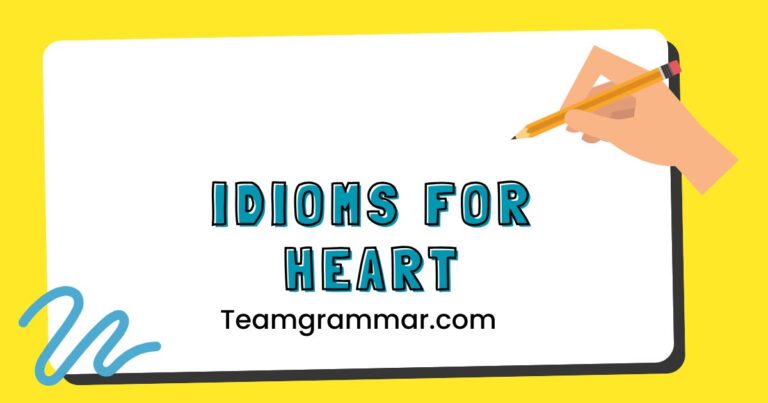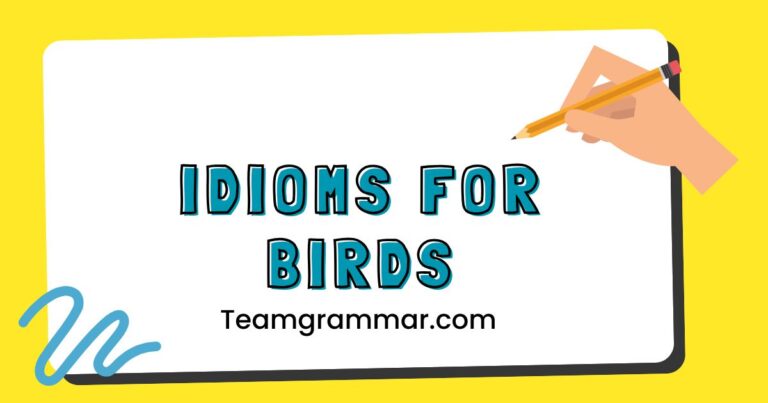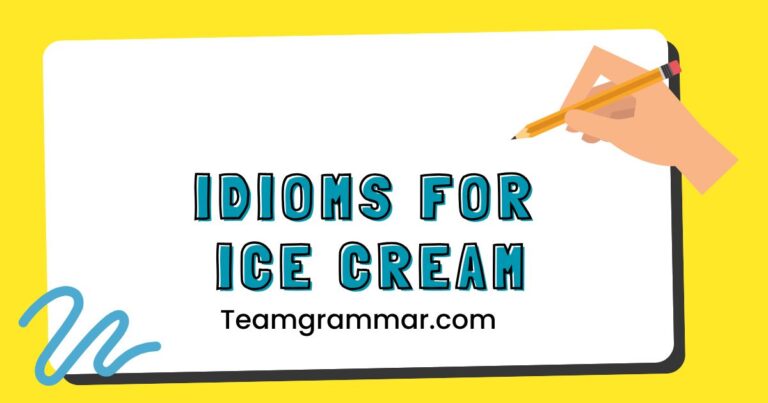36 Dancing Through Language: Mastering Idioms for Dance
Idioms are a crucial part of the English language, adding color and depth to everyday conversations and writing. Understanding idioms related to dance not only enriches your vocabulary but also provides a unique insight into how language reflects cultural activities.
This article is designed to help English language learners, dance enthusiasts, and anyone interested in broadening their linguistic horizons. By exploring dance-related idioms, you will improve your comprehension skills, enhance your communication, and gain a deeper appreciation for the nuances of the English language.
This comprehensive guide breaks down common idioms associated with dance, offering clear definitions, structural analyses, and practical examples. Whether you’re a beginner or an advanced learner, this article provides the tools and resources necessary to confidently incorporate these idioms into your everyday speech and writing.
Table of Contents
- Introduction
- Definition of Idioms for Dance
- Structural Breakdown
- Types and Categories of Dance Idioms
- Examples of Dance Idioms
- Usage Rules
- Common Mistakes
- Practice Exercises
- Advanced Topics
- FAQ
- Conclusion
Definition of Idioms for Dance
Idiomsare expressions whose meanings cannot be understood from the literal meanings of the individual words. They are figurative language and often culturally specific, making them a fascinating yet challenging aspect of language learning.
Dance idioms are a subset of these expressions that use dance-related terms to convey broader meanings or concepts.
Dance idioms draw upon the imagery and connotations associated with dance, such as movement, rhythm, coordination, and performance. They often describe situations, emotions, or behaviors that have parallels to aspects of dance.
For example, an idiom might use the concept of “leading” in a dance to describe someone taking control in a project or relationship. Understanding these idioms requires recognizing the symbolic connection between dance and the concept being expressed.
Dance idioms function in various contexts, from casual conversations to formal writing. They add color and expressiveness to the language, allowing speakers and writers to convey complex ideas in a concise and memorable way.
However, their non-literal nature means they must be learned and understood as complete units of meaning rather than analyzed word by word.
Structural Breakdown
The structure of dance idioms, like other idioms, varies greatly. Some are short phrases, while others are complete sentences.
Understanding their structure involves recognizing the key dance-related term and how it interacts with the other words in the phrase to create the figurative meaning.
Many dance idioms follow common grammatical patterns, such as subject-verb-object or prepositional phrases. However, the meaning isn’t derived from these patterns alone.
Instead, the idiom’s meaning is fixed and must be memorized. For example, in the idiom “dance around the issue,” the structure is a simple verb phrase, but the meaning is not about literal dancing; it’s about avoiding a direct discussion.
Identifying the core dance term within the idiom is crucial. This term acts as the anchor for the figurative meaning.
For instance, in “lead the dance,” the word “lead” is central, indicating control or direction. Understanding the connotations of this term helps to grasp the idiom’s overall meaning.
Types and Categories of Dance Idioms
Dance idioms can be categorized based on the specific dance-related concept they employ or the type of meaning they convey. Here are some common categories:
Movement and Coordination
These idioms use terms related to physical movement, steps, and coordination to describe various actions or situations.
Leadership and Control
Idioms in this category focus on the roles of leading and following, often to represent authority, influence, or decision-making.
Rhythm and Timing
These idioms draw on the concepts of rhythm and timing to describe the pace or flow of events.
Performance and Presentation
They relate to the act of performing, presenting oneself, or handling a situation with grace and skill.
Avoidance and Evasion
These idioms use dance imagery to describe avoiding or evading a topic, responsibility, or confrontation.
Examples of Dance Idioms
This section provides a comprehensive collection of dance idioms, categorized for easier understanding. Each idiom is accompanied by its meaning and example sentences to illustrate its usage.
Movement and Coordination Idioms
The following table presents idioms related to movement and coordination in dance. These idioms often describe the flow of events or the way someone handles a situation.
| Idiom | Meaning | Example Sentence |
|---|---|---|
| Find your rhythm | Discover a comfortable and effective way of doing something. | After a few weeks, she finally found her rhythm at the new job. |
| Get into the groove | Become comfortable and proficient in a new activity or routine. | Once he got into the groove of coding, he started producing high-quality work. |
| Go through the motions | Do something without enthusiasm or genuine effort. | He was just going through the motions at work, clearly unmotivated. |
| Two left feet | To be clumsy or uncoordinated, especially when dancing. | I have two left feet when it comes to dancing, so I usually sit out. |
| Trip the light fantastic | To dance lightly and gracefully. | They tripped the light fantastic at the New Year’s Eve party. |
| Move to the same beat | To be in agreement or harmony. | For the project to succeed, everyone needs to move to the same beat. |
| Out of step | Not in agreement or harmony with others. | His ideas were completely out of step with the rest of the team. |
| Toe the line | Conform to a rule or standard. | If you want to keep your job, you need to toe the line. |
| Change your tune | Alter your opinion or behavior. | He completely changed his tune once he realized he was wrong. |
| Dance to someone’s tune | Do what someone else wants you to do. | I refuse to dance to his tune; I’ll make my own decisions. |
| In sync | Working well together. | The team was perfectly in sync, leading to a successful presentation. |
| Off balance | Unstable or not in equilibrium. | The news left her feeling off balance for days. |
| Take the lead | To be the first to act or take control. | She decided to take the lead in organizing the charity event. |
| Follow suit | To do the same as someone else. | When he resigned, others followed suit. |
| Step up | To take action when needed. | He had to step up when the project started falling behind schedule. |
| Miss a step | To make a mistake or error. | He missed a step during the presentation, but quickly recovered. |
| Hit your stride | To reach a consistent level of performance. | After a few months, she finally hit her stride in the new role. |
| Shuffle off | To leave or depart in a casual manner. | He shuffled off after the meeting, eager to get home. |
| Break a leg | Good luck (especially before a performance). | Break a leg tonight! I’m sure you’ll be great. |
| On your toes | Alert and ready for anything. | The fast-paced environment keeps everyone on their toes. |
| Keep pace | Maintain the same speed or level. | It’s hard to keep pace with all the new developments in technology. |
| Lose your footing | To become unstable or insecure. | He lost his footing in the company after the scandal. |
| Move mountains | To overcome significant obstacles. | With enough determination, you can move mountains. |
Leadership and Control Idioms
This table illustrates idioms that use dance terms to describe leadership, influence, and control in various situations. These idioms often highlight the dynamics between people and their roles in decision-making.
| Idiom | Meaning | Example Sentence |
|---|---|---|
| Lead the dance | Take control or be in charge of a situation. | As the CEO, she leads the dance in setting the company’s direction. |
| Call the shots | Make the important decisions. | In this project, the manager calls the shots. |
| Pull the strings | Control events or people from behind the scenes. | It’s rumored that he pulls the strings in the organization. |
| Set the stage | Prepare the conditions for something to happen. | The new policy sets the stage for future growth. |
| Take center stage | Become the focus of attention. | The scandal caused the company to take center stage in the media. |
| Steal the show | Receive the most attention or praise. | The young actor stole the show with his performance. |
| In the limelight | Being the center of public attention. | She’s been in the limelight since her award-winning performance. |
| Orchestrate | To plan and coordinate carefully. | He orchestrated the entire event with precision. |
| Conduct | To direct or manage something. | She conducts the meetings efficiently and effectively. |
| Pull rank | Use one’s authority to get something done. | He had to pull rank to get the project approved. |
| Call the tune | To be in control and make the decisions. | In this household, the parents call the tune. |
| Take the reins | To assume control or leadership. | She decided to take the reins of the family business. |
| Be at the helm | To be in charge or in control. | With him at the helm, the company is sure to succeed. |
| Run the show | To be in charge and manage everything. | She runs the show at the office, handling all the important decisions. |
| Dictate terms | To impose conditions or rules. | The company was able to dictate terms in the negotiation. |
| Lay down the law | To set strict rules or guidelines. | The teacher had to lay down the law to maintain order in the classroom. |
| Wield influence | To have power or control over others. | He wields influence within the political party. |
| Be the puppet master | To secretly control others. | Some say he’s the puppet master behind the scenes. |
| Take charge | To assume control or responsibility. | She decided to take charge of the situation. |
| Call the shots | Make the important decisions. | In this project, the manager calls the shots. |
| At your command | Ready to obey your orders. | The staff is at your command, ready to assist you. |
| Rule the roost | To be in charge and make the decisions. | She rules the roost in her family. |
Rhythm and Timing Idioms
The following table provides idioms related to rhythm and timing, often used to describe the pace or flow of events and activities. These idioms highlight the importance of synchronization and timing.
| Idiom | Meaning | Example Sentence |
|---|---|---|
| In the swing of things | Familiar with and comfortable in a new situation. | It took a while, but now I’m in the swing of things at my new job. |
| Keep in step | Stay in harmony or agreement with others. | It’s important to keep in step with the latest trends in the industry. |
| Miss a beat | To hesitate or be momentarily thrown off. | He missed a beat when he heard the unexpected news. |
| Set the tempo | Establish the pace or speed of something. | The coach set the tempo for the team’s training sessions. |
| March to the beat of your own drum | Do things your own way, regardless of what others do. | She has always marched to the beat of her own drum. |
| Right on cue | At the exact moment expected or needed. | The rain started right on cue, just as we finished the outdoor event. |
| A well-oiled machine | Something that runs smoothly and efficiently. | The department operates like a well-oiled machine. |
| Smooth operator | Someone who is charming and persuasive. | He’s a smooth operator who always gets what he wants. |
| On time | Punctual; not late. | It’s crucial to be on time for the meeting. |
| Behind schedule | Later than planned. | The project is running behind schedule. |
| Ahead of the curve | More advanced than others. | The company is ahead of the curve in its use of technology. |
| Keep up with the times | Stay informed and current with trends. | It’s important to keep up with the times in this fast-paced industry. |
| In due course | At the appropriate time. | You will receive the information in due course. |
| On the dot | Exactly on time. | The meeting started on the dot at 9 AM. |
| A step ahead | Slightly more advanced or prepared. | She always tries to be a step ahead of her competitors. |
| Sync up | To synchronize or coordinate. | Let’s sync up our calendars to find a convenient meeting time. |
| Missed the boat | Missed an opportunity. | He missed the boat by not investing in the company early on. |
| Jump the gun | Act prematurely. | He jumped the gun by announcing the news before it was official. |
| Drag your feet | To be slow or reluctant in doing something. | He’s been dragging his feet on the project. |
| In a timely manner | Done efficiently and promptly. | Please submit the report in a timely manner. |
| Take your time | Don’t rush, do it at your own pace. | Take your time and do the job properly. |
| At a snail’s pace | Very slowly. | The project is progressing at a snail’s pace. |
| Gain momentum | To gather speed or force. | The campaign is starting to gain momentum. |
Avoidance and Evasion Idioms
This table presents idioms that use dance imagery to describe avoiding a topic, responsibility, or confrontation. These idioms often involve indirectness or skillful maneuvering.
| Idiom | Meaning | Example Sentence |
|---|---|---|
| Dance around the issue | Avoid discussing a topic directly. | Instead of addressing the problem, he just danced around the issue. |
| Skirt the issue | Avoid dealing with something difficult or unpleasant. | The politician skirted the issue during the interview. |
| Beat around the bush | Avoid getting to the point. | Stop beating around the bush and tell me what you really think. |
| Sidestep | Avoid something by stepping to the side. | She skillfully sidestepped the question. |
| Dodge a bullet | Avoid a dangerous or unpleasant situation. | He dodged a bullet when he decided not to invest in that company. |
| Duck the question | Avoid answering a question. | The politician tried to duck the question about his involvement. |
| Evade | Escape or avoid, especially by cleverness. | He managed to evade the reporters after the scandal. |
| Brush aside | Ignore or dismiss something. | She brushed aside his concerns and continued with the plan. |
| Look the other way | Ignore something that one knows is wrong. | The authorities often look the other way when it comes to minor offenses. |
| Turn a blind eye | Pretend not to notice something. | The manager turned a blind eye to the employee’s misconduct. |
Usage Rules
Using dance idioms correctly requires understanding their specific meanings and contexts. Here are some key rules to follow:
- Understand the context: Consider the situation and the intended meaning before using an idiom.
- Use them appropriately: Dance idioms are often informal, so avoid using them in highly formal settings.
- Don’t mix idioms: Avoid combining parts of different idioms, as this can create confusion.
- Be aware of cultural differences: Idioms can be culturally specific, so ensure your audience will understand them.
Example of Correct Usage: “She had to take the lead on the project when her boss was away.”
Example of Incorrect Usage: “He was beating around the skirt of the issue.” (Mixing “beating around the bush” and “skirting the issue”)
Common Mistakes
One of the most frequent errors is interpreting idioms literally. Because idioms have figurative meanings, understanding the intended message is critical.
Another common mistake involves using the wrong idiom in a given context, which can confuse the listener. Here are some examples of common mistakes and their corrections:
| Incorrect | Correct | Explanation |
|---|---|---|
| “He really has two left legs.” | “He really has two left feet.” | The correct idiom uses “feet,” not “legs,” to describe clumsiness. |
| “She is dancing around the tree.” | “She is dancing around the issue.” | The literal image of dancing around a tree is incorrect. The correct idiom is “dancing around the issue,” which means avoiding a topic. |
| “They are marching at their own drum.” | “They are marching to the beat of their own drum.” | The correct idiom includes “to the beat,” not “at.” |
Practice Exercises
Test your understanding of dance idioms with these exercises. Fill in the blanks with the appropriate idiom from the list provided.
Exercise 1
Idiom Choices: dance around the issue, in the swing of things, two left feet, take the lead, hit your stride
| Question | Answer |
|---|---|
| 1. I’m still new here, but I’m starting to get __________. | in the swing of things |
| 2. He doesn’t want to answer the question directly; he’s trying to __________. | dance around the issue |
| 3. I can’t dance at all; I have __________. | two left feet |
| 4. Someone needs to __________ and organize this project. | take the lead |
| 5. After a few months, she started to __________ and perform well. | hit your stride |
| 6. Stop trying to __________ and just tell me what you want. | dance around the issue |
| 7. He had __________ when he tried to dance with her. | two left feet |
| 8. It is important for someone to __________ in this situation. | take the lead |
| 9. After a slow start, the team finally __________ and began winning games. | hit your stride |
| 10. After a few weeks, he got __________ and started to enjoy his new job. | in the swing of things |
Exercise 2
Idiom Choices: call the shots, on their toes, follow suit, keep pace, miss a beat
| Question | Answer |
|---|---|
| 1. The manager is the one who _________ in this project. | calls the shots |
| 2. The unexpected news made her __________. | miss a beat |
| 3. The fast-paced environment keeps everyone __________. | on their toes |
| 4. When the first employee resigned, others began to __________. | follow suit |
| 5. It’s difficult to __________ with all the new technology. | keep pace |
| 6. The CEO is the one who __________ in this company. | calls the shots |
| 7. The unexpected announcement made everyone __________. | miss a beat |
| 8. The demanding boss keeps everyone __________. | on their toes |
| 9. After the first company adopted the new policy, others began to __________. | follow suit |
| 10. It’s important to __________ with the latest trends in order to stay competitive. | keep pace |
Exercise 3
Idiom Choices: lead the dance, change your tune, trip the light fantastic, go through the motions, move to the same beat
| Question | Answer |
|---|---|
| 1. As the team leader, it’s your job to __________. | lead the dance |
| 2. He had to __________ once he realized he was wrong. | change your tune |
| 3. They __________ at the wedding reception. | tripped the light fantastic |
| 4. He was just __________ at work, clearly unmotivated. | go through the motions |
| 5. For this project to succeed, we need to __________. | move to the same beat |
| 6. The CEO decided to __________ and guide the company in a new direction. | lead the dance |
| 7. He was forced to __________ when he was presented with the evidence. | change your tune |
| 8. They decided to __________ at the party and enjoy the night. | trip the light fantastic |
| 9. She was just __________ at her job, waiting for a better opportunity. | go through the motions |
| 10. The team needs to __________ to achieve their goals. | move to the same beat |
Advanced Topics
For advanced learners, understanding the etymology and cultural context of dance idioms can provide deeper insights. Researching the origins of these idioms can reveal fascinating connections between dance and language.
Additionally, exploring how dance idioms are translated and adapted in different languages can offer a comparative perspective on linguistic expression.
Consider also the evolution of idioms. Language is constantly changing, and new idioms emerge while older ones fade away.
Studying contemporary usage and identifying emerging dance-related idioms can enhance your understanding of current linguistic trends.
FAQ
- What is an idiom?
An idiom is a phrase or expression whose meaning cannot be understood from the literal meanings of its individual words. It’s a figurative way of expressing an idea or concept.
- Why are idioms important in English?
Idioms add color and depth to the English language. They make communication more expressive and engaging. Understanding idioms is crucial for comprehending native speakers and for sounding more natural when speaking or writing.
- How can I learn dance idioms more effectively?
Immerse yourself in English language content, such as books, movies, and conversations. Pay attention to how native speakers use idioms in context. Keep a notebook of new idioms and practice using them in your own speech and writing. Flashcards and online resources can also be helpful.
- Are dance idioms common in everyday conversation?
Yes, many dance idioms are frequently used in everyday conversation. However, their usage depends on the context and the level of formality. Some idioms are more common in informal settings, while others are appropriate for more formal situations.
- Can I use dance idioms in formal writing?
It depends on the specific idiom and the tone of your writing. Some dance idioms are relatively formal and can be used in certain types of writing, while others are too informal for academic or professional contexts. Always consider your audience and the purpose of your writing.
- What should I do if I don’t understand a dance idiom?
Look up the idiom in a dictionary or online resource. Pay attention to the context in which the idiom is used. Ask a native speaker for clarification if necessary. Understanding the context and the overall meaning of the sentence or conversation can often provide clues to the idiom’s meaning.
- How do I avoid misusing dance idioms?
Practice using idioms in context. Pay attention to how native speakers use them. Be aware of the specific meaning and connotations of each idiom. Avoid mixing idioms or using them in inappropriate situations. When in doubt, it’s better to use a more literal expression to ensure clarity.
- Are dance idioms universal, or do they vary by culture?
Like all idioms, dance idioms can vary significantly by culture. Some idioms may be specific to certain regions or countries, while others may have different meanings or connotations in different cultures. It’s important to be aware of these cultural differences to avoid misunderstandings.
- Can I create my own dance idioms?
While it’s possible to create new idioms, they are unlikely to be widely understood unless they catch on organically. Idioms typically evolve over time through common usage. It’s generally best to focus on learning and using existing idioms correctly rather than trying to invent new ones.
- How can I improve my overall understanding of English idioms?
Read widely, listen to English language content, and practice speaking and writing in English as much as possible. Pay attention to the idioms that native speakers use and try to incorporate them into your own communication. Consider taking an English language course or working with a tutor to improve your vocabulary and grammar skills.
- Are there any resources that can help me learn more about dance idioms?
Yes, there are many online dictionaries and resources that provide definitions and examples of idioms. Additionally, books on English grammar and vocabulary often include sections on idioms. Language learning apps and websites can also be helpful for practicing and reinforcing your understanding of idioms.
- How often do new idioms emerge in English?
New idioms emerge fairly regularly, reflecting changes in culture, technology, and social trends. However, not all new phrases become widely accepted as idioms. The process of an expression becoming an idiom typically takes time and requires widespread adoption.
Conclusion
Mastering dance idioms is a valuable step in enhancing your understanding and fluency in the English language. By learning these expressions, you gain a deeper appreciation for the cultural nuances and figurative language that enrich communication.
Remember to practice using these idioms in context to solidify your understanding and improve your ability to express yourself effectively.
Continue to explore and expand your knowledge of idioms as you progress in your language learning journey. The more you immerse yourself in the English language, the more you’ll encounter and understand these colorful expressions.
With consistent effort and practice, you’ll be able to confidently incorporate dance idioms into your everyday speech and writing, adding flair and precision to your communication.

